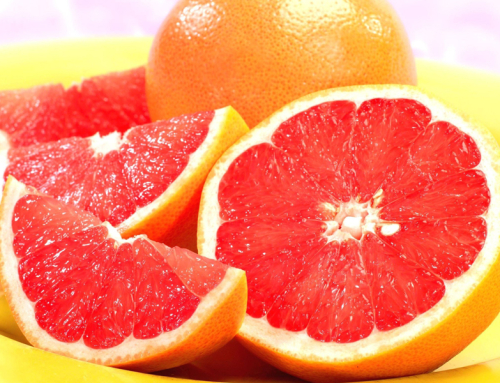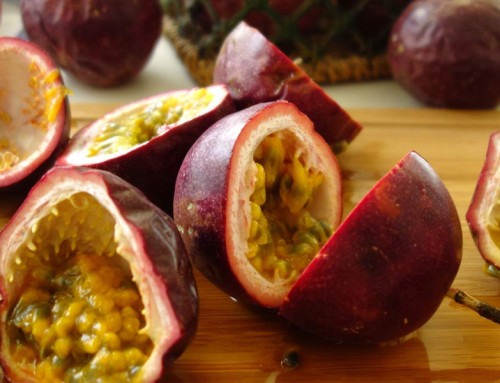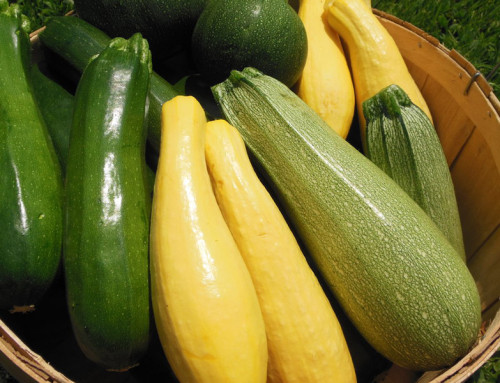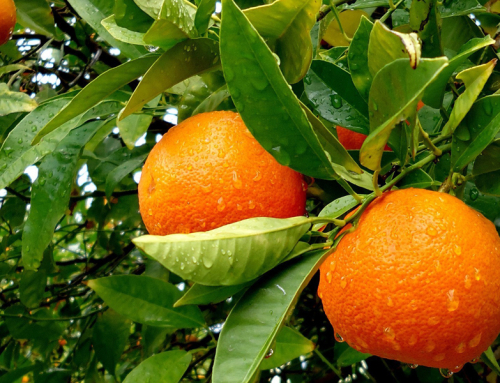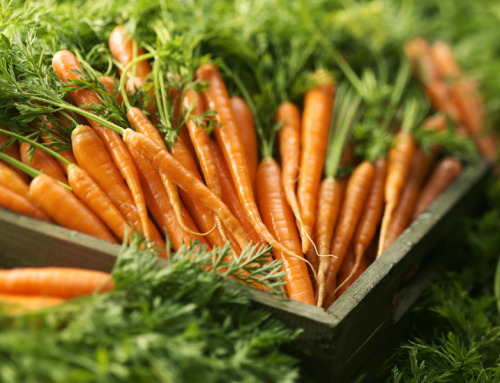Generic Peach
- 100 g (3.5 oz) = 39 calories
- 1 cup slices (170.0 g) = 66 calories
- Small, 2 inches, (79.0 g) = 31 calories
- Medium, 2.5 inches, (98.0 g) = 38 calories
- Large, 2.75 inches, (157.0 g) = 61 calories
- Extra large, 3 inches, (224.0 g) = 87 calories
- Canned Peaches, fruits and syrup, 1 cup, approx. 262 g – 194 calories
- Canned Peaches, fruits and juice, 1 cup, approx. 248 g – 109 calories
- Dried Peaches, 3 halves, approx. 39 g – 93 calories
- Frozen Peaches, sliced and sweetened, 1 cup, approx. 250 g – 235 calories
Nectarine
- 1 cup slices (138.0 g) = 61 calories
- Medium, 2.5 inches, (142.0 g) = 62 calories
- Large, 2.75 inches, (156.0 g) = 69 calories
Peaches
- Peaches and nectarines have bio-active phenolic compounds (anthocyanins, clorogenic acids, quercetin derivatives and catechins) that have anti-obesity, anti-inflammatory and anti-diabetic properties that can help fight-off metabolic syndrome by working on different kinds of cells. They may also reduce the cholesterol LDL which is associated to cardiovascular disease.
- Chlorogenic acid is a major antioxidant that helps scavenge free radicals to reduce the effects of aging and help defer chronic diseases. It may also help ward off cancer and reduce body inflammation.
- A large peach contains 17 g of carbohydrates, 3 g of which come from dietary fiber. Fiber is essential to healthy digestion and colon health as well as regulating cholesterol levels and blood sugar levels.
- Peaches a rich source of 11 different vitamins.
- Peaches contain vitamin C (11.6 mg ), an antioxidant that is important to the immune system, as well as a tissue-builder.
- Peaches also contain 570 international units of vitamin A, as well as beta-carotene that is important in creating more vitamin A in the body. Both are important to important to healthy vision.
- Peaches are also a source of the B Vitamins: thiamine (B1) 0.024 mg (2%); riboflavin (B2) 0.031 mg (3%); niacin (B3) 0.806 mg (5%); pantothenic acid (B5) 0.153 mg (3%); vitamin B6 0.025 mg (2%); folate (B9) 4 μg (1%) …and amygdalin (B17) 10 mg, found only in the kernel of the fruit’s pit.
- Peaches also contain vitamin E (6% RDA), an antioxidant, and vitamin K (6% RDA), responsible for the blood’s clotting ability.
- A large peach is rich source of of potassium (333 mg) which is essential for balancing the body’s fluids, and blood pressure, as well as prevent kidney stones and bone loss.
- Peaches provide some magnesium, phosphorus, zinc, copper, manganese, iron and calcium as well. These minerals are essential for maintaining red blood cells, bones, and a healthy nervous system.
Nectarines
- Nectarines have approximately 0.45 g of fat, or less than half a gram of fat per serving.
- An average nectarine has 14.98 g of carbohydrates in the form of the three major sugars such as sucrose (6.92 g), glucose (2.23 g) and fructose (1.95 g) and these help provide energy.
- The rest of the carbohydrates in a nectarine come from dietary fiber (2.4 g) and helps to maintain healthy bowel function.
- Nectarines have slightly more protein (1.51 g) than most fruits.
- Nectarines have trace amounts amino acids, which combine with other amino acids that are eaten with the fruit, such as in a salad, to form complete proteins in the body.
- Nectarines have 9 mg of calcium, 285 mg of potassium and 13 mg of magnesium which work together to regulate the body’s fluid balance, blood pressure and skeletal health.
- Nectarines are high in vitamin C, with 7.7 mg per cup. This vitamin is well-known for immune system regulation and fighting off colds.
- One cup of fresh nectarines supplies 214 mcg of beta-carotene. This is a crucial compound because it enables the body to produce vitamin A. A deficiency of beta-carotene, may cause a deficiency in vitamin A, which can lead to reproductive disorders, abnormal bone development, macular degeneration and even death.
- A 1-cup serving of fresh nectarines contains 186 mcg of lutein, an important antioxidant, that supports healthy eyes and skin and it may reduce the risk of chronic diseases like cancer.
- Nectarines also contain iron (.25 mg), folic acid (2% RDA), and vitamin K (2% RDA), all of which are important in maintaining hemoglobin.
More than 300 peach varieties are grown in North America alone, but China produces the most peaches in the world. But the main thing you need to know about a peach is whether it has either yellow or white flesh and if the pit, or stone, is a clingstone, freestone, or semi-freestone.
Yellow-flesh Peaches
Most peaches in the U.S. are of the yellow-flesh type. They tend to have more of an acidic tang than white-flesh peaches, with a more intense flavor and darker skin.
White Flesh Peaches
White flesh peaches are more popular in Asia but are becoming more available in the U.S. They are more delicate and easily bruised, though tougher varieties exist now, which is aiding their availability. They are very sweet, with a delicate, floral sweetness, that some consider to be a bit too bland and “like a fuzzy ball of water”. . They have a low acidity along with a smoother texture than yellow-flesh peaches. They also have a more pale color to the skin. Donut peaches are an heirloom white flesh variety that are flat and low in acid. They are generally only found at farmers markets.
Freestone Peaches
Freestone peaches have pits that do not stick to the fruit. It “flies free” and is easily removable and comes out cleanly. There are many varieties and they are most often eaten like apples, in the hand. They tend to be larger and less juicy than clingstones.
Clingstone Peaches
Clingstone peaches have fruit that clings to the seed pit, and are a bit more messy. They are softer, sweeter, and juicier than freestone peaches, and are used for canning and preserving. Commercially canned peaches are almost always clingstones. Farmers markets are more likely to have clingstones, since most grocery stores only sell freestones.
Semi-Freestone Peaches
Semi-Freestone peaches are hybrids between freestones and clingstones developed to combine the easy eating and pitting traits of the freestones with the juicy sweetness of the clingstones.
Nectarines
Nectarines and peaches are actually the same species, Prunus persica, even though commercially they are considered to be different fruits. Nectarines have a smooth skin, believed to be a recessive trait, and peaches have a fuzzy skin which is the dominant trait for the species. It is not unusual to find both fruits on the same tree, although they tend to be smaller and sweeter. Nectarines can also be white-flesh, yellow-flesh, clingstone or freestone. Nectarines have a bit more vitamin C, along with double the amount of vitamin A, They are also a richer source of potassium.
Peacharines
Peacharines exist and are only available in Australia. They are said to be a cross between peaches and nectarines, which seems a bit odd to cross something with itself, but this one seems to be more of a language game from Down Under than anything else.
A peeled peach or nectarine will have less calories, less fiber and less vitamins. So eat the peel, even if it is a bit fuzzy and tickles on the way down, for maximum health benefits.
People often peel peaches because of the fuzz, and nectarines, also, but they are removing a lot of the health benefits by doing so. They believe the skin has pesticides on it, which may or may not be true. But the skin is meant to be eaten with the peach, just like you eat the casing with the sausage. Washing your peaches and nectarines before eating them is always a good idea, and that alleviates the issue. Buying organic fruit solves that issue completely, so eat the skin.
Also, it’s OK to crack open the peach pit and eat the inner almond-like kernel. As with many other members of the rose family (Rosacea), peach seeds contain cyanogenic glycosides, including amygdalin (it’s subgenus designation is Amygdalus)..Amygdalin, (also known as vitamin B17 or Laetrile), is a molecule that is part of the nitrilosides family of anti-cancer compounds. And, like the apple, amygdalin contains cyanide which is “unlocked” by a cancer cell and only by a cancer cell. Healthy cells are not be affected or harmed because they do not contain the enzyme that “unlocks” the cyanide. Therefore, B17 should only come from food sources, not from supplements. So, go ahead and eat the prize inside.
NOTE: Some people may be allergic to peaches due to hypersensitivity to certain proteins in this and related fruit, including almonds. Symptoms may be local, such as just coming in contact with the fruit, to systemic that can cause hives, gastrointestinal and respiratory distress, or angioedema. The reaction seems to be related to how fresh the fruit is, and peeled or canned fruit may be better tolerated.


